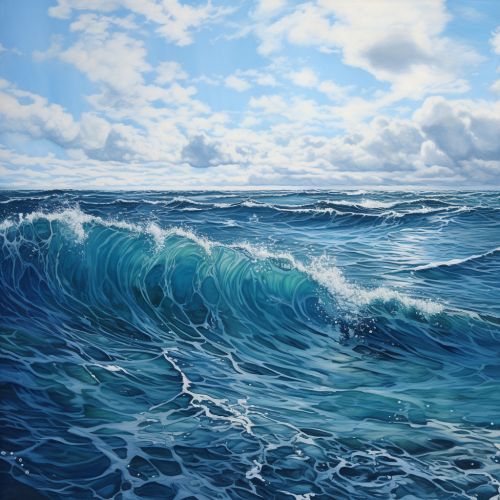Ocean Circulation
Introduction
Ocean circulation refers to the large scale movement of waters in the ocean basins. The circulation pattern is driven by forces such as wind, tides, Coriolis effect, temperature, salinity, and the gravitational pull of the sun and moon. The study of ocean circulation is important as it influences climate, marine life, and human activities.
Driving Forces of Ocean Circulation
Wind
Wind is one of the primary forces that drive ocean circulation. The friction between the wind and the ocean surface pushes the water, creating waves and currents. The strength and direction of the wind greatly influence the direction and speed of ocean currents.
Temperature and Salinity
The variations in temperature and salinity across the ocean also play a crucial role in ocean circulation. Warmer, less salty water is less dense and tends to float on the surface, while colder, saltier water is denser and sinks. This process, known as thermohaline circulation, drives a global network of deep-ocean currents.
Tides
Tides, caused by the gravitational pull of the moon and sun, also contribute to ocean circulation. The rise and fall of tides cause water to move, creating tidal currents. These currents can be particularly strong near the coastline and in narrow channels.
Coriolis Effect
The Coriolis effect, caused by the rotation of the Earth, also influences ocean circulation. It causes moving water to turn to the right in the northern hemisphere and to the left in the southern hemisphere. This effect is responsible for the circular motion of large-scale ocean currents, known as gyres.
Types of Ocean Currents
Ocean currents can be classified into two main types: surface currents and deep-ocean currents.
Surface Currents
Surface currents constitute about 10% of all the water in the ocean and are generally driven by wind. They occur at depths up to 400 meters and are primarily influenced by the global wind patterns and the Coriolis effect. The major surface currents include the Gulf Stream in the North Atlantic, the Kuroshio Current in the Pacific, and the Antarctic Circumpolar Current.
Deep-Ocean Currents
Deep-ocean currents, also known as thermohaline currents, make up the other 90% of ocean water. These currents are driven by differences in the water's density, which is controlled by temperature (thermo) and salinity (haline). These currents move much slower than surface currents and can take thousands of years to complete a cycle.
Major Ocean Currents
There are several major ocean currents that have a significant impact on the climate and marine life.
Gulf Stream
The Gulf Stream is a powerful, warm, and swift Atlantic ocean current that originates in the Gulf of Mexico, exits through the Strait of Florida, and follows the eastern coastlines of the United States and Newfoundland before crossing the Atlantic Ocean.
Kuroshio Current
The Kuroshio Current is a north-flowing ocean current on the west side of the North Pacific Ocean. It is similar to the Gulf Stream in the Atlantic Ocean and is part of the North Pacific ocean gyre.
Antarctic Circumpolar Current
The Antarctic Circumpolar Current is the largest ocean current, which circulates around Antarctica and connects the Atlantic, Pacific, and Indian Oceans. It plays a crucial role in global climate as it distributes heat and nutrients around the world's oceans.
Impact of Ocean Circulation
Ocean circulation has a profound impact on the Earth's climate, marine life, and human activities.
Climate Regulation
Ocean currents play a significant role in regulating the Earth's climate. They transport heat from the equator to the poles, helping to regulate and stabilize temperature. For example, the Gulf Stream carries warm water from the tropics to the North Atlantic, moderating the climate in northwestern Europe.
Marine Life
Ocean currents also have a significant impact on marine life. They transport nutrients from the deep ocean to the surface, supporting the growth of phytoplankton, the base of the marine food web. Currents also influence the distribution and migration patterns of many marine species.
Human Activities
Ocean currents can also influence human activities. They can affect shipping routes, fishing, and offshore industries. Understanding ocean currents is also crucial for predicting and mitigating the impact of oil spills and marine pollution.


